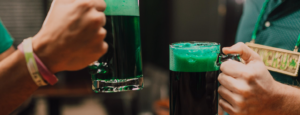The holidays are right around the corner, and while your holiday shopping may not have even started, more than 61% of retailers have already released their holiday deals. But with a projected 15% global increase in year-over-year digital revenue this holiday season, it’s not too late to get a slice of the pie.
More than 20% of all shoppers and 37% of Gen Zers will turn to Instagram to get gift ideas, but with 50% of the holiday season’s digital sales predicted to be finished by December 6, now is the time to tune up your social channels.
Let’s dig into how to attract, accelerate, and convert shoppers using social.
- Use the Right Assets (at the Right Time)
It’s a proven fact that social video content is on the rise. But if you’re hoping to drive commerce from your social channels, it may be time to hit pause on video content creation and instead start increasing your volume of photo posts. Unless you’re ready to invest in a third-party partner like MikMak, social videos are not yet fully shoppable. Images, on the other hand, are. Last year, over 40% of millennial shoppers admitted they were likely to purchase via shoppable photos during the holiday season. As a result, now is the time to strategically increase in-feed shoppable content so as to not appear too pushy. Over-promoting is the number one reason people unfollow a brand.
The key is to establish a slow but regular cadence of these shoppable, product-focused posts building up to the holidays. For example, try sharing shoppable posts on consistent day(s) of the week, so shoppers are able to adjust to seeing your products in their feed regularly. Also, consider incorporating or increasing user-generated content—nearly 80% of shoppers say it highly influences their decision to purchase (which is about 10x more impactful than influencer-generated content). - Go Full-Funnel in Your Paid Strategy
Q4 is the most competitive paid media quarter of the year on social, correlated to the fact that more than one-third of small and medium-sized businesses spend a majority of their holiday ad budgets on the medium. But similar to hotels, flights, and even products on Amazon, prices for paid social costs-per can fluctuate weekly and even daily, especially throughout the holiday season. In turn, creating longer campaign flights with diversified objectives can help increase paid media efficiencies, especially to combat the price spikes of one-day shopping holidays like Black Friday and Cyber Monday.
A full-funnel approach means you can start by seeking out the broadest and most basic target for awareness campaigns while paying lower costs to reach potential shoppers. Then, narrowing down targets throughout each phase of the funnel means only paying to reach more primed audiences at more efficient costs. While costs-per may be highest for conversion-based campaigns, one of the easiest ways to effectively accelerate from browsing to buying is through dynamic remarketing. By using this strategy, brands like Airbnb and Finish Line have seen increases in return on ad spend, online sales, and reach. - Choose “Shop Now” CTAs
Normally, it may seem aggressive to push “shop now” calls to action across every phase of the funnel. But during the holiday season, one in six millennial shoppers will be looking for that information on potential gift purchases via ads in their social news feeds. Providing shoppers with an idea of what to do after they see your ad in their feed (i.e., buy your product) is more likely to prompt them into action than simply showcasing products. In fact, more than one out of every three online shoppers say they use buy buttons to shop right from their mobile device, and in the past three years, the share of social referral traffic to eCommerce websites has nearly tripled.
If you don’t offer free shipping during the holidays, consider implementing a click-and-collect model or driving consumers to a retail partner who already offers it. In last year’s holiday season, click-and-collect orders grew 46% in just over a month. On the other hand, if your brand doesn’t have an eCommerce-optimized website, it’s not the end of the user journey. Consider linking through to other retailer websites to complete the sale—it’s predicted that two out of every five online shoppers will be using Amazon to buy gifts this year. - Make the End Destination Frictionless
Whether shoppers are wanting more information or details, searching for physical store locations, or even planning that click-and-collect purchase, it’s important to consider the experience they’re expecting. Your website should pick up where your social content left off. This may mean there’s a need to include multiple landing page options and links that connect back to the creative they’re coming from.
Also, chances are that anyone looking to take the next step toward a purchase is coming from a mobile device. In fact, more than half of digital purchases will be made via mobile. If it takes your website more than three seconds to load, you’ve likely already lost more than half of your potential shoppers. Keep your mobile site responsive and easy to navigate.
All in all, the holidays should be an exciting time for brands, retailers, and shoppers. However, keep in mind that while shoppers are inspired by what they see on social, the competition for their eyes will be high. While there are a number of other factors, including quality and quantity of content, implementing these four tactics will help create a strong foundation for successful social-driven commerce through the end of the year.
Contributed by: Susan Parsons, Director, Social Media & Content, Integer Denver
Image Source: Shutterstock


